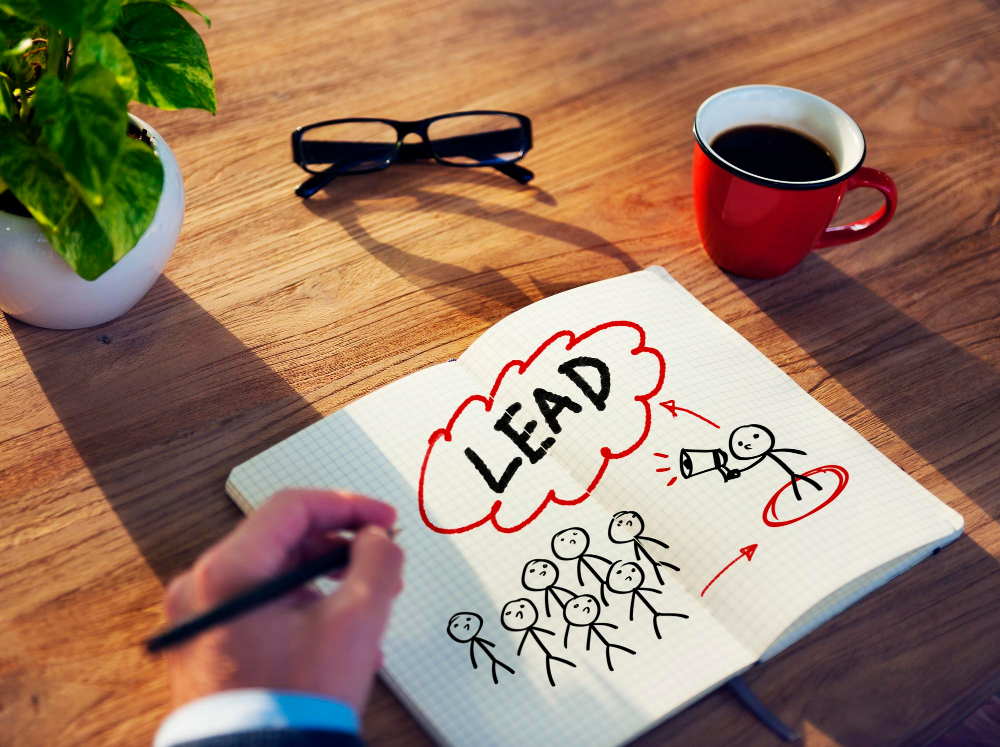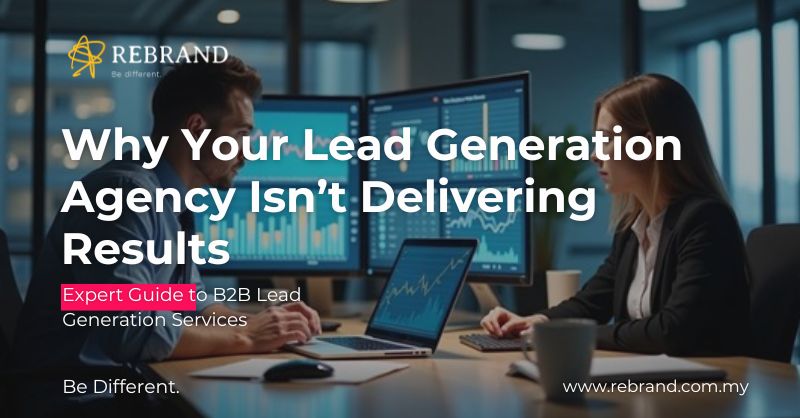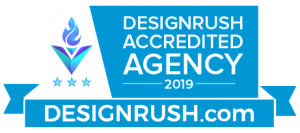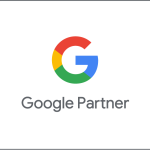Is your lead generation agency underperforming? You’re not alone. The potential in this industry is massive. Companies like Majorel work across 44 countries with 82,000 employees, and several others generate billions in revenue. Yet many businesses struggle to see any real return from their outsourced lead generation efforts.
The root cause is deeper: campaigns like B2B lead generation services aren’t aligned to your Ideal Customer Profile (ICP).Some still use outdated methods that don’t match today’s buyer’s behavior. Success stories exist – Atlantic Growth Solutions has helped its clients boost average deal size by 30% and cut sales cycles by 40%. Still, many agencies stick to ineffective approaches that drain your marketing budget.
This piece reveals why your lead generation company underperforms. You’ll learn to measure true ROI and get practical steps to fix your current partnership. You may need to find a B2B lead generation agency that delivers real results in 2025.

Why lead generation success is harder than ever
B2B lead generation results have become harder to achieve over the last several years. The rules of the game look different now—old methods don’t bring the same outcomes anymore. Let me explain why.
The evolving B2B buyer journey
B2B buying has changed dramatically. Sales no longer controls information. Up to 80% of B2B interactions are now digital. This makes old relationship-building methods less powerful.
Buyers complete about 70% of their decisions before they talk to sales. Your prospects research solutions and remove vendors from their list long before your sales team presents their pitch.
A typical B2B purchase now needs 6 to 10 stakeholders from IT, finance, operations, and executive leadership. Each person has different priorities. Some care about security, others look at ROI, integration features, or expandable solutions. This multi-stakeholder process makes alignment harder.
The people making B2B purchases have also changed fundamentally. Millennials and Gen Z now hold 64% of B2B buying roles. These digital-savvy buyers think differently about purchases than older generations. They listen to podcasts, don’t trust traditional sales methods, and are five times more likely to try a new vendor based on social content rather than a tradeshow.
This new reality affects your lead generation plan. Companies that don’t adapt their lead generation methods fight old battles with outdated tools.
Why traditional tactics don’t work anymore
Numbers tell a clear story. Traditional outreach success has dropped by 71% since 2022. Cold emails that once got 5% responses now barely reach 0.5%. LinkedIn connection acceptance rates have fallen from ~34% to under 12%. Cold calling works even less – B2B decision-makers answer just 2 out of 100 calls from unknown numbers.
This decline has many sides. Your target customers get 147 sales emails every week. Their LinkedIn inbox fills up with connection requests that lead to copied-and-pasted pitches. Smart buyers have created ways to block unwanted messages.
Traditional lead generation fails because it doesn’t match what modern buyers want. B2B buyers expect the same smooth experience they get as consumers. 73% of buyers want a B2C-like experience with quick demos, clear pricing, transparent SLAs, and personalized suggestions.
Many B2B lead generation services still use old ideas. They think buyers want early sales contact or need “education” from salespeople. Reality shows something different – 75% of buyers prefer to buy without talking to sales. They trust their own research more.
Companies often react to poor results by pushing harder with failed methods—sending more emails, requests, and calls. Experts call this the “Death Zone” of B2B lead generation. Teams work harder but see worse results until their pipeline stops completely.
Successful companies take a different approach. They start by offering real value that fixes specific problems. Their B2B lead generation matches how buyers actually make purchases—not how sellers want to sell.
8 hidden reasons your lead generation company isn’t working
Your partnership with a lead generation agency should deliver qualified leads consistently. Yet many businesses end up frustrated. Here are eight hidden reasons your partnership might not work as expected:
- They don’t understand your industry
Generic strategies rarely work. Most lead generation companies lack specific industry knowledge. They treat B2B sectors the same way. Without expertise in your field, they miss important buying signals, send wrong messages, and target incorrect decision-makers.
Research shows that industry-focused agencies achieve 41% higher conversion rates than general firms. These specialists understand specific pain points and speak your buyers’ language. They also have strong connections with industry publications, events, and influencers that general agencies can’t match.
- They’re not in sync with your sales process
A gap between lead generation work and your sales process can destroy conversion rates. Your agency might send leads that your sales team finds unqualified or at the wrong stage in their buying trip.
Teams that meet weekly see lead-to-opportunity conversion rates 67% higher than others. Companies with clear lead handoff systems experience 35% shorter sales cycles. This shows how important good communication can be.
- They use outdated lead scoring models
Many agencies still depend on simple lead scoring models that look at basic demographics and engagement metrics. These old models can’t predict who really wants to buy.
Modern scoring needs behavioral signals, tech data, and immediate analytics. Companies that employ AI-improved lead scoring see 39% higher lead-to-sale conversion rates than those using old methods. Good lead scoring predicts not just interest but readiness to buy.
- They miss buyer intent signals
Missing buyer intent signals means losing chances when prospects actively look for solutions. Intent data shows when prospects research solutions across the web.
Companies that make use of intent data in their lead generation see 28% higher conversion rates and 42% faster deal velocity. Still, only a third of lead generation companies effectively use intent data to guide their outreach.
- They stick to one channel
Depending too much on one channel—usually email or LinkedIn—limits success. B2B buyers today use multiple platforms, which needs a coordinated approach.
Businesses running coordinated multi-channel campaigns generate 24% more qualified leads than single-channel efforts. The best channel mix changes by industry and buyer type—something experienced agencies understand well.
- They send generic messages
Messages that focus on features instead of customer problems rarely appeal to prospects. Using first names is standard now, but real personalization goes deeper.
Industry-specific messages and personalized content achieve 67% higher engagement rates than generic ones. Messages tailored to a prospect’s role in buying decisions work exceptionally well, boosting response rates by 38%.
- They neglect lead nurturing
Many agencies chase new leads but forget to nurture existing ones. This approach ignores that 73% of B2B leads aren’t ready to buy at first contact.
Good lead nurturing means sending relevant content based on buying stage and interests. Companies with proper nurturing programs generate 50% more sales-ready leads at 33% lower cost. Nearly half of lead generation companies lack these nurturing skills.
- They track the wrong metrics
Your agency might focus on surface-level metrics instead of business results. Numbers like total leads, email opens, or cost per lead tell only part of the story.
Pipeline contribution, lead-to-customer conversion rate, and customer acquisition cost matter most. Companies that track these outcome-based metrics are 3.2 times more likely to hit their revenue targets than those watching activity metrics.
These issues can help you improve your current agency relationship or decide it’s time for a new partner that fits your needs better.
How to measure real lead generation ROI
Understanding how well your lead generation investment works requires looking deeper than basic numbers. Many businesses track activities rather than outcomes. This makes it impossible to know if their lead generation agency delivers value. Let’s look at ways to measure what really counts.
Beyond vanity metrics: what to track
Many lead generation companies show off big numbers that barely connect to actual business results. These “vanity metrics” – like total audience size, email open rates, or raw lead volume – often hide poor performance.
Revenue-linked outcome metrics matter most. Companies that focus on these outcome-based metrics are 3.2 times more likely to achieve or exceed their revenue targets compared to those that track activity metrics.
Don’t get excited by a lead generation company bragging about “millions of contacts.” Ask how many leads they can guarantee based on your specific targeting criteria. Here are the metrics that really matter:
- Marketing Qualified Leads (MQLs) and Sales Qualified Leads (SQLs)
- Lead-to-opportunity conversion rates
- Pipeline contribution
- Customer acquisition cost (CAC)
- Overall return on investment (ROI)
These metrics tell you if your B2B lead generation services actually help grow your business.
Lead-to-customer conversion rate
This key metric shows what percentage of leads become paying customers. It shows how well your entire sales funnel works and helps you learn about your lead generation company’s performance.
Here’s how to calculate your lead-to-customer conversion rate: Lead-to-Customer Conversion Rate = (Number of Converted Customers / Total Number of Leads) × 100%
For example, if your B2B lead generation agency brought in 500 leads and 50 became customers, you’d have a 10% conversion rate.
This number reveals if your lead generation efforts attract prospects who want to buy. Low conversion rates often point to issues with lead quality, nurturing processes, or sales follow-up.
Industry averages differ by a lot. Research shows that B2B companies average around 6% for lead-to-customer conversion. Your best bet is to track this metric over time and compare it to your past performance rather than focusing on industry standards.
Cost per qualified lead vs. cost per lead
Lead generation companies often highlight low cost-per-lead (CPL) numbers, but this can be misleading alone. Here’s how CPL works: CPL = Total Marketing Spend / Total Number of Leads Generated
To cite an instance, a $5,000 campaign that generates 500 leads gives you a $10 CPL.
However, a low CPL with poor-quality leads wastes money. Measuring cost per qualified lead (CPQL) or cost per SQL gives you better insight into your actual return on investment.
This advanced metric reveals your cost to generate high-quality, sales-ready leads. It serves as a reality check for your budget efficiency, since CPL only matters if it creates real opportunities.
Here’s the formula for this useful metric: Cost per SQL = Total Spend ÷ Number of SQLs
The real test of a lead generation agency isn’t cheap leads – it’s how well they deliver leads that become customers. Tracking both cost per qualified lead and lead-to-customer conversion rate gives you the full picture of your lead generation ROI.
These metrics help you make smart choices about which lead generation company deserves more of your budget and which ones you might need to replace with a better B2B lead generation agency.

The importance of ICP in B2B lead generation services
The success of your lead generation often depends on something many businesses miss—the Ideal Customer Profile (ICP). An ICP gives you a detailed picture of the perfect customer who needs your product or service. Without this foundation, even big-budget lead generation campaigns can fall flat.
Harvard Business Review data shows companies with sales and marketing teams that line up—work from the same ICP experience 38% higher win rates. This connection between teams isn’t optional. You need it for consistent results.
How to define your ICP clearly
Start building an effective ICP by looking at your current customer base. Put aside what you think about your ideal customers and get into who actually brings value with minimal issues. These patterns are the foundations of your ICP.
Here’s how you can define your ICP with precision:
- Analyze your most profitable clients: Which industries do they work in? What’s their revenue range? Who makes the buying decisions?
- Conduct customer interviews: You’ll learn more from five to ten deep conversations than months of internal discussions. Ask them about their buying process, challenges, and why they chose you.
- Identify specific challenges: Skip generic ones like “wants growth” and focus on the exact outcomes they want.
- Distill to a single sentence: Your ICP should capture industry, company size, key roles, and main pain point. Trim it to one crisp sentence.
Companies with clear ICPs see conversion rates 36% higher than others. You can’t skip defining your ICP if you want steady revenue growth—everything else builds on this foundation.
Why your agency must build around your ICP
Your lead generation company needs to create all campaigns with your ICP at the center. Companies using well-defined ICPs achieve 68% higher ROI than those casting a wider net. This makes it non-negotiable.
A €1,000 LinkedIn campaign targeting one million people won’t get you anywhere. The same budget focused on 1,000 perfect-fit prospects can change your pipeline completely. This targeted approach lets your agency:
- Put marketing resources where they’ll bring the best returns
- Create messages that appeal to specific pain points
- Build familiarity and trust by showing up regularly to decision-makers
- Get better leads while spending less
Any B2B lead generation agency worth your time should put ICP-driven strategies first. One B2B SaaS company narrowed their focus to mid-market companies (€5M–€100M revenue) and saw a 3x increase in qualified leads with a 50% reduction in cost per lead.
A marketing agency made a “wish list” of 500 target companies based on their refined ICP. They uploaded this list to LinkedIn and combined account-based targeting with custom messaging. The results spoke for themselves: 40% pipeline growth in just three months.
Many people think having an ICP means turning away clients who don’t fit the profile. The truth is, it helps you focus your marketing where it works best while staying open to great opportunities that might come along.
The best B2B lead generation services stick to this approach. An ICP gives you the focus you need to build campaigns that connect with high-value prospects. This turns lead generation from a numbers game into a precise strategy that works.
What a good lead generation strategy looks like
Modern lead generation strategies work best when multiple tactics come together as one unified system. Companies with full pipelines share a common trait – they’ve abandoned the “either/or” mindset to create strategies that reflect modern buying behaviors.
Combining inbound and outbound tactics
Lead generation companies achieve the best results by using inbound and outbound methods together. Valuable content and buyer-controlled experiences create a solid foundation through inbound tactics. Outbound methods deliver quick results with precise targeting capabilities.
Research shows companies running coordinated multi-channel campaigns generate 24% more qualified leads than those using single channels. Success comes from creating a feedback loop between both approaches:
- Information from inbound engagement shapes outbound targeting
- Outbound prospects receive relevant inbound resources
- Messages stay consistent at every touchpoint
- Teams responsible for each approach work in harmony
Small and medium businesses benefit from mixing inbound and outbound activities to build awareness and identify ideal customers. Large enterprises typically succeed with account-based marketing combined with strategic inbound content that supports direct outreach.
Using content, SEO, and paid ads together
Content marketing, SEO, and paid advertising create a powerful combination when integrated properly. These elements work as partners rather than budget competitors.
SEO builds lasting organic visibility but needs time – results take months to show. Paid ads bring immediate traffic and let you test messages quickly with specific audiences. Using both creates the perfect balance between quick wins and sustainable growth.
These channels create amazing opportunities together. High-converting keywords from PPC campaigns become excellent targets for organic content. Your top organic keywords can also improve paid advertising strategy.
SEO often outperforms paid ads over time; use paid for quick validation and SEO for compounding growth. Successful lead generation agencies don’t pick favorites – they create strategies where each element makes the others stronger.
Smart marketers test keywords through paid campaigns before investing in SEO content. This approach reduces uncertainty and makes organic efforts more productive. Another strategy uses SEO to build strong organic traffic while paid ads target specific keywords or audience segments.
The role of account-based marketing (ABM)
Account-based marketing represents B2B lead generation’s progress from broad targeting to precise focus on high-value accounts. ABM prioritizes quality over quantity by using your Ideal Customer Profile as the foundation for targeting.
This approach reverses the traditional funnel – ideal accounts get identified first, followed by personalized campaigns for decision-makers within those organizations. Complex solutions with multiple stakeholders benefit greatly from this method.
ABM delivers remarkable results, including better sales and marketing alignment and stronger customer relationships. Companies using ABM strategies report 81% higher ROI compared to traditional marketing.
Modern lead generation agencies apply ABM principles even without formal programs. Understanding account context beyond individual lead data offers valuable insights to personalize outreach and speed up deals.
In a nutshell, 2025’s lead generation strategies need integration rather than separation. Your lead generation partner should orchestrate multiple approaches – inbound with outbound, content with paid media, broad awareness with targeted ABM. This creates a unified system that matches your buyers’ decision-making process.
How to audit your current lead generation agency
A systematic audit of your lead generation agency will give you value for your investment. 61% of B2B marketers rank high-quality leads as their biggest challenge. A well-laid-out assessment helps you spot strengths and weaknesses in your current partnership.
Checklist to assess performance
Your audit should get into these performance areas to see if your lead generation company delivers results:
- Lead quality over quantity: Your focus should be on conversion rates instead of raw lead numbers. Many suppliers lack transparency about their lead generation processes. This makes marketers doubt the quality of leads they get.
- Data transparency and ownership: You need to know who owns the lead data and its collection method. Good agencies show you where leads come from and how they engage with your content.
- Reporting depth: Problems often hide behind generic reports. Your agency should provide detailed analytics that show campaign performance and ways to improve.
- Response to underperformance: Look at how your agency handles missed campaign targets. They should suggest improvements rather than blame external factors.
- Sales and marketing alignment: Check if your lead generation agency aids collaboration between teams. Teams that work together see 38% higher win rates.
- Lead source effectiveness: Each channel’s performance needs analysis. This helps identify quality lead sources and those that waste your budget.
- Lead scoring methodology: The agency’s scoring model should identify sales-ready prospects based on current criteria.
Questions to ask in your next review meeting
Your next review should include these direct questions to gage your B2B lead generation agency‘s effectiveness:
- “How and when did our leads interact with our content?” The answer reveals genuine lead engagement versus questionable collection methods.
- “What is your discovery process for understanding our business?” A weak discovery process shows they don’t tailor strategies to your needs.
- “How do you define and track lead quality beyond volume metrics?” This shows if they focus on real outcomes rather than vanity metrics.
- “Can you show us how campaign data integrates with our CRM and sales platforms?” The response reveals if they create a smooth process or work alone.
- “What criteria do you use to qualify leads before passing them to sales?” This helps ensure leads match your ideal customer profile and sales goals.
- “How are you measuring ROI beyond cost per lead?” Their answer shows if they understand that customer acquisition matters more than lead generation.
- “What is your process to get consent and prove data?” This confirms their compliance with data practices and regulations.
Regular assessment of these areas helps you decide if your current lead generation partner deserves more investment or if you should look elsewhere.

When to switch your lead generation partner
Breaking up with your lead generation agency is tough. Sticking with a partner that isn’t delivering results can drain your time and money. You need to know the right moment to make this business move and handle the switch properly.
Warning signs it’s time to move on
These red flags show your B2B lead generation services provider might not be right for you anymore:
Poor lead quality shows up when leads don’t match your ideal customer profile. Your resources go to waste with lower conversion rates because of poor targeting, old data, or weak qualification processes. Listen carefully when your sales team keeps complaining about unqualified leads.
Unrealistic guarantees should raise eyebrows. Be wary of any lead generation company that promises specific conversion rates or ROI without looking at your industry, location, and target audience. Quick results don’t happen overnight, and agencies that promise instant success rarely have your interests at heart.
Lack of transparency in lead generation methods, data ownership, or campaign performance points to trouble ahead. Good B2B lead generation agencies give you regular data access, detailed reporting tools, and open communication about their strategy. You can’t navigate well without this visibility.
Declining returns as you spend more money should ring alarm bells. The partnership needs a fresh look if your cost per qualified lead keeps going up while conversion rates drop.
How to transition without losing momentum
After you decide to switch, take these steps to keep things running:
- Document current processes before you end things. Know what works, even partly, so you don’t lose good insights during the change.
- Overlap agencies temporarily if your budget allows. Let your new lead generation company start before the old one leaves to make the handoff smoother.
- Prioritize clear communication as you make the switch. Different goals and expectations cause the biggest headaches during agency changes.
- Establish data transfer protocols so lead information, campaign history, and performance metrics move smoothly to your new partner.
Remember that good transitions between lead generation agencies take time. Quick changes often mess up campaigns and waste opportunities. Plan carefully and you’ll switch partners while keeping your pipeline strong.
Choosing the right B2B lead generation agency in 2025
Choosing a B2B lead generation agency in today’s crowded marketplace needs careful evaluation. The right partner can dramatically accelerate your growth, while the wrong choice drains valuable resources.
What to look for in a modern agency
Quality lead generation companies showcase industry-specific expertise instead of one-size-fits-all approaches. Of course, you should pick agencies that provide high-quality, exclusive leads verified through advanced processes. Their technology stack matters—modern agencies use verification tools that check against 40+ data points to ensure lead fit and accuracy. Their systems should merge naturally with your CRM to prevent data silos.
How to test before you commit
You should start with a small trial project before signing any long-term agreement to minimize risk. Ask for proof of performance metrics from previous campaigns, including conversion rates and examples of moving leads through your funnel. You need to get into how they define and track lead quality beyond volume metrics.
Why flexibility and transparency matter most
Quality lead generation partners keep clients based on performance alone, so avoid agencies that lock you into long-term contracts.Transparency about lead sources and methods builds trust and results. A trustworthy B2B lead generation agency provides regular access to reporting and analytics that gives you clarity and control over your campaigns.
The best partners communicate openly about their lead collection and qualification methods, data ownership, and success metrics.
Conclusion
Choosing the right lead generation partner will be one of your most crucial business decisions in 2025. This piece reveals why many lead generation agencies don’t deliver results. They use outdated tactics, have poor measurement practices, and lack industry expertise. Most underperform due to poor ICP alignment, outdated tactics, and vanity metrics.
Today’s B2B landscape demands new approaches. Your buyers complete 70% of their decision-making process before they contact sales. Traditional outreach methods work substantially less well now. Any agency using old-school approaches will struggle to fill your pipeline with qualified leads.
Quality metrics reveal the real story behind your lead generation efforts. Don’t focus on vanity metrics like raw lead volume or email open rates. Instead, track conversion rates, pipeline contribution, and actual customer acquisition costs. These outcome-based measurements show if your investment stimulates business growth.
A well-defined ICP creates the foundations of productive lead generation. Companies with clear ICPs achieve 68% higher ROI compared to those using broad targeting approaches. Your agency should build campaigns around this profile instead of casting wide, ineffective nets.
Successful strategies blend multiple approaches. They combine inbound with outbound, content with paid advertising, and broad awareness with targeted ABM. This integrated approach matches modern buyers’ purchasing decisions and creates multiple touchpoints throughout their experience.
Your lead generation agency should earn your business through performance, not contracts. Look for partners who are transparent about their methods, flexible in their approach, and have proven results with businesses like yours.
The right agency can transform your pipeline and revenue trajectory. The insights from this piece help you review your current provider, make adjustments, or find a new partner who can deliver the qualified leads your business needs to succeed.
Ready to Stop Wasting Budget on Underperforming Lead Generation?
At Rebrand Malaysia, we don’t just generate leads — we deliver qualified opportunities that match your Ideal Customer Profile and fuel real revenue growth. Whether you need to fix your current strategy or build a modern, multi-channel lead engine from scratch, our B2B lead generation services are built to perform in 2025’s complex buyer landscape.
Contact us today to embark on this exciting journey of growth and success.
Your brand and business deserve their very own story.
Check out our portfolio: www.rebrand.com.my/portfolio
Get a FREE 30-minute consultation with Rebrand Malaysia Now!
Subscribe to our newsletter to always be up-to-date with the latest online marketing trends and insights!
Call us at : 011-39570709
Email us at: [email protected]
WhatsApp: https://wa.link/razoe6
- Cara Masuk FYP TikTok: Waktu Upload Terbaik yang Terbukti Berhasil - October 3, 2025
- Why Your Website Needs Professional Maintenance Services - October 3, 2025
- How to Choose a Local SEO Agency That Really Brings Customers In - October 3, 2025



